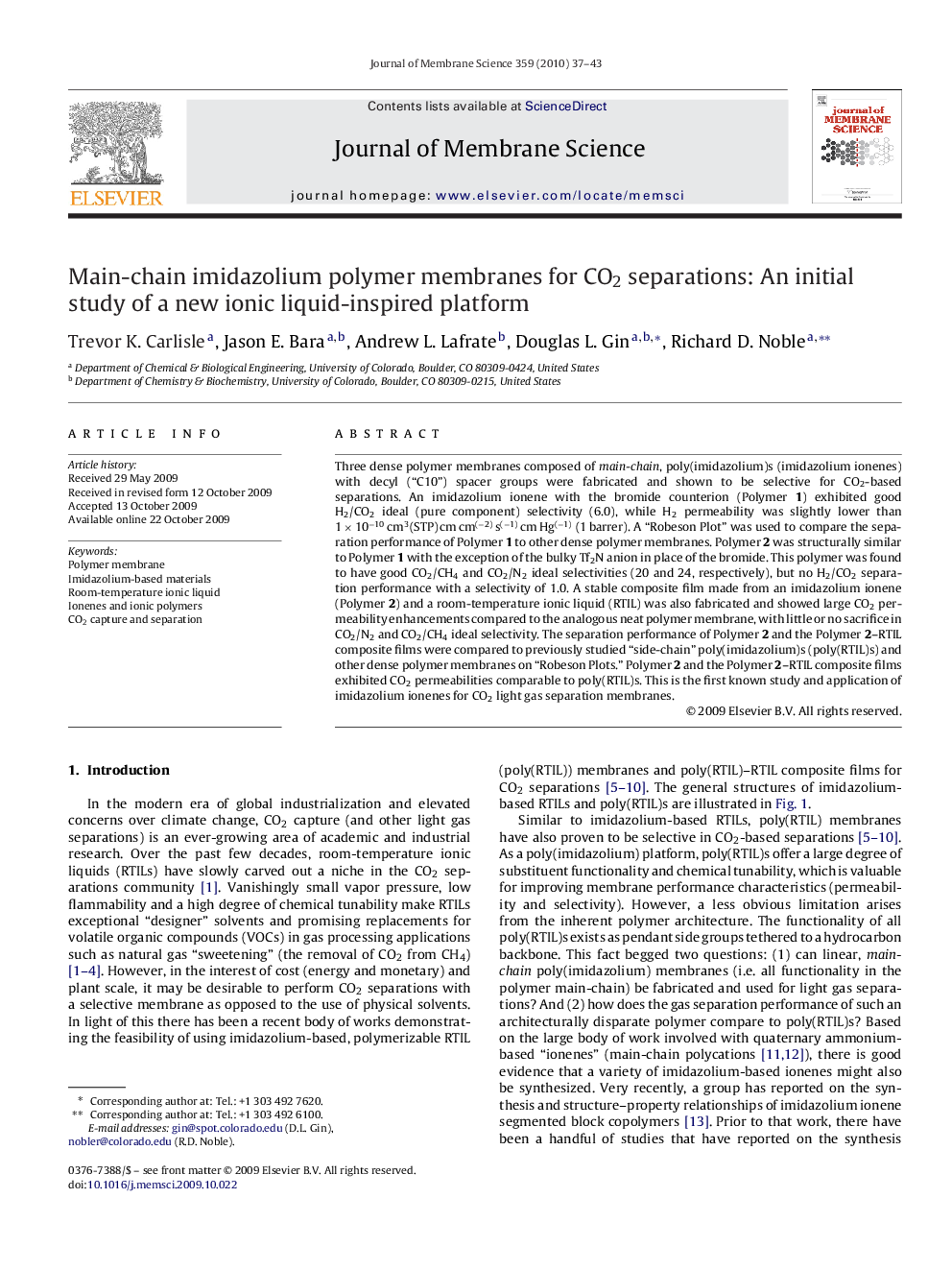| Article ID | Journal | Published Year | Pages | File Type |
|---|---|---|---|---|
| 636341 | Journal of Membrane Science | 2010 | 7 Pages |
Three dense polymer membranes composed of main-chain, poly(imidazolium)s (imidazolium ionenes) with decyl (“C10”) spacer groups were fabricated and shown to be selective for CO2-based separations. An imidazolium ionene with the bromide counterion (Polymer 1) exhibited good H2/CO2 ideal (pure component) selectivity (6.0), while H2 permeability was slightly lower than 1 × 10−10 cm3(STP) cm cm(−2) s(−1) cm Hg(−1) (1 barrer). A “Robeson Plot” was used to compare the separation performance of Polymer 1 to other dense polymer membranes. Polymer 2 was structurally similar to Polymer 1 with the exception of the bulky Tf2N anion in place of the bromide. This polymer was found to have good CO2/CH4 and CO2/N2 ideal selectivities (20 and 24, respectively), but no H2/CO2 separation performance with a selectivity of 1.0. A stable composite film made from an imidazolium ionene (Polymer 2) and a room-temperature ionic liquid (RTIL) was also fabricated and showed large CO2 permeability enhancements compared to the analogous neat polymer membrane, with little or no sacrifice in CO2/N2 and CO2/CH4 ideal selectivity. The separation performance of Polymer 2 and the Polymer 2–RTIL composite films were compared to previously studied “side-chain” poly(imidazolium)s (poly(RTIL)s) and other dense polymer membranes on “Robeson Plots.” Polymer 2 and the Polymer 2–RTIL composite films exhibited CO2 permeabilities comparable to poly(RTIL)s. This is the first known study and application of imidazolium ionenes for CO2 light gas separation membranes.
